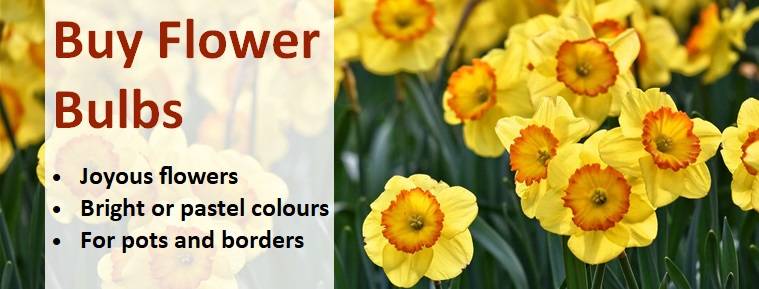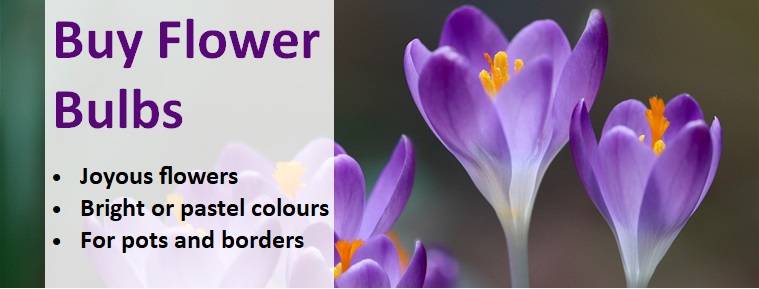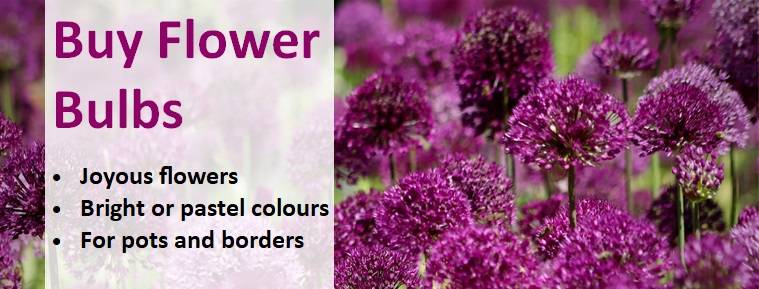How to Plant Bulbs in your Garden
Flower bulbs are an excellent addition to any garden. They provide a splash of colour to borders throughout the year and many can be grown in containers to fill areas of hardstanding or balconies with their joyous flowers too. They’re also very effective grown up through grassed areas to naturalise and beautify your lawn.
Buying Bulbs
Most bulbs have a long period of dormancy, meaning they require very little attention for most of the year. When choosing bulbs, look out for big, fat, firm bulbs, these will be the healthiest ones. Avoid any which are damaged, shrivelled, soft or mouldy, as these are likely to fail, leaving you with a disappointing gap in your flower beds. When buying bulbs, aim to plant them within 1 week of purchase to prevent them sprouting too early. Keep them in a cool, dark place until you are ready to plant.
When to plant bulbs
- Spring flower bulbs are planted between September and November, depending on the variety.
- Summer bulbs such as agapanthus, cannas and alliums should be planted in spring, when the soil is beginning to warm up. They’ll require a minimum temperature of 13 degrees Celsius before they’ll start to grow. Avoid planting in cold, wet soils, otherwise they are likely to rot.
- Plant bulbs as soon as possible after purchase – they’ll be shipped to you when the time is right to get them in the ground straight away.
Spring flowering bulbs (to plant in autumn) - Nerines, Daffodil, Snowdrops (variety specific), Crocus, Hyacinth, Lillies, Allium, Tulip, Crocosmia, Iris, Narcissus, Ranunculus, Tree Lily, Anemone, Fritillaria and Muscari
Summer/Autumn flowering bulbs (to plant in spring) - Gladioli, Begonia, Cardiocrinum, Dahlia, Bluebell, Ponerorchis and Snowdrops (variety specific).
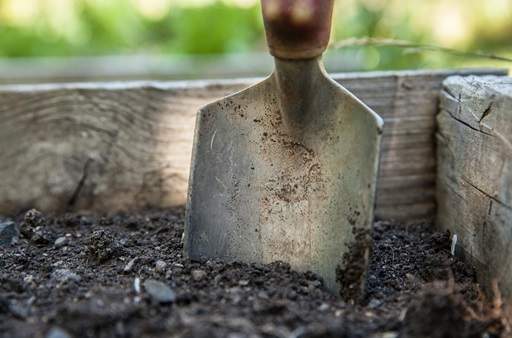
Where to plant bulbs
- A free draining soil is important to ensure your bulbs do not rot. Any waterlogging over winter can cause the bulbs to rot before they have even sent out any shoots.
- On heavy clay soils, incorporate 2 buckets of coarse sand per square metre to improve drainage. Alternatively, mixing in plenty of well-rotted organic matter can help improve drainage too.
- Hardy bulbs, such as Daffodils and Tulips, prefer a warm, sunny site, whereas bulbs from cooler climates, such as Cardiocrinum, prefer a cooler, moist site with dappled shade.
- Different bulbs have different soil and aspect preferences, so check for your specific variety.
Planting in Drifts or Containers:
- Many bulbs look stunning when planted in bold drifts in borders, such as Fritillaria and Crocosmia, but they can look equally beautiful when planted in containers or even in a lawn.
- Snowdrops lend themselves well to any of these situations, especially lawns, whilst Tulips and Lilies look spectacular when planted in containers.
- Drainage is key with bulbs, so no matter where you choose to plant them, ensure there is adequate drainage.
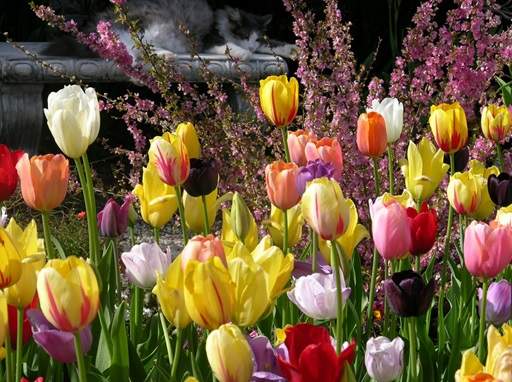
How to plant bulbs
- Bulbs may be planted in individual holes, one for each bulb, or trenches for many bulbs.
- Place the bulbs in the holes/trench, making sure the growing point is pointing upwards. Do not push bulbs down hard as this may damage them.
- With some varieties the growing tip is not always obvious, in which case planting them on their side will ensure the shoot heads for the surface, no matter what end it is.
- Simply cover with soil carefully and firm down gently once backfilling is complete.
- Take into account blooming time – it often works well to plant a combination of early, mid and late-season bloomers to extend the season.
Combined bulb and summer bedding displays:
- Bulbs can also be combined with other summer bedding plants to create a beautiful display. Violas, Erysimum and Forget-me-nots are great for combining with the striking colours of Tulips.
Planting pot grown bulbs “in the green”:
- Bulbs grown in pots can be planted directly into the garden border where you want them to flow. Gardeners call this “planting in the green”.
- Dig a hole the same depth and twice the width of the pot and break up the soil at the bottom of the hole with a fork.
- Plant the potted bulbs at the same depth as they were in the pot, backfill carefully and firm down.
Growing Bulbs in the Border
- When planting bulbs in your garden borders, aim to plant them in groups of at least 6 to provide a better display.
- Dig a hole wide and deep enough for your bulbs. As a rule of thumb, measure the bulbs from the base to the tip and double or triple this measurement to get a rough idea of the planting depth.
- Our planting depth diagram will also help you to work out how deep to dig your hole.
- Place the bulbs in the hole with their growing tip facing upwards.
- Space them at least twice the bulb’s own width apart. Replace the soil and gently firm it, avoid doing this with your feet or too much force as this can damage the bulbs.
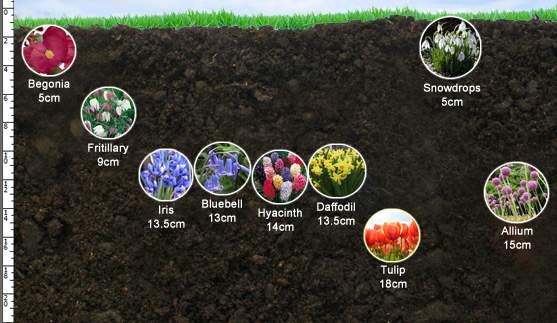
Growing Bulbs in Containers
- Most bulbs are ideal for growing in containers with showy flowers such as Tulips and Alliums in particular making beautiful statements.
- Use a good quality multi-purpose compost in your containers combined with a handful of grit to improve drainage. Specialist bulb compost is also available.
- Plant bulbs as you would in a garden border, but they can often be planted closer together to provide a stronger display.
- If mice and other pests are a problem, cover the top of your pots and containers with chicken wire or mesh until the new shoots appear.
- Pots may need protection from frost during the winter, so wrap the pots with newspaper or horticultural fleece. Clustering several pots together will also help them to stay warm.
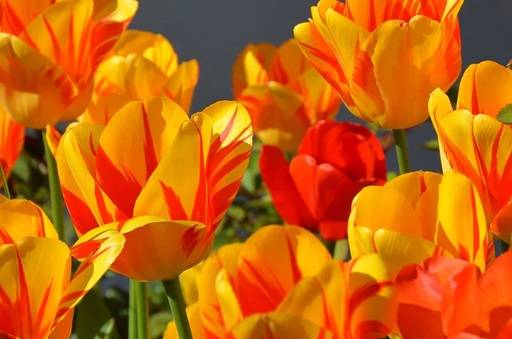
Growing Bulbs in the Lawn
- Bulbs grown in an informal lawn can make a spectacular display. The key is to keep the appearance informal and natural.
- The best method of achieving this is to scatter your chosen bulbs on top of the lawn. Wherever each bulb lands, dig a hole with a strong trowel and plant according to the required bulb height.
- Replace the soil and gently firm to remove any air pockets. Avoid treading on this area of lawn as this may result in the bulb becoming damaged.
- A good time saving method for larger areas is to remove the turf and plant the bulbs underneath en masse.
- Once the new shoots appear, leave the lawn mowing until they have finished flowering and the leaves have started to die back.
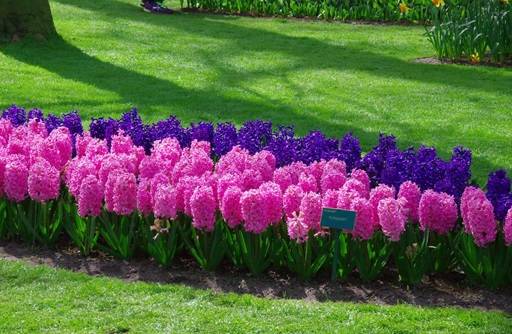
Planting Density for Bulbs
- For a more spectacular display, bulbs should be planted in groups. The size of the group depends on the type of bulb. See the table below for details on some of the recommended densities:
| Variety | Bulbs per square metre |
| Allium schoenoprasum | 50 |
| Colchicum autumnale | 150 |
| Crocus chrysanthus 'Snow Bunting' | 75 |
| Fritillaria meleagris Britheg | 225 |
| Galanthus nivalis 'Flore Pleno' (double) | 225 |
| Galanthus nivalis 'Lili Wen Fach' (single) | 225 |
| Hyacinthoides non-scripta | 150 |
| Narcissus 'Tete a Tete' | 75 |
| Tulipa 'Red Riding Hood' | 50 |
| Tulipa sylvestris | 50 |
Aftercare
- After planting your bulbs, ensure that the ground around them does not get trampled or squashed, as this can cause the bulbs below to break, which in turn will hinder their growth.
- Keep planting areas well watered throughout the growing period. Pay extra care and attention to any bulbs in containers and pots as they will dry out more quickly than bulbs in the border.
- Although they can look ugly, plant tags are essential for remembering where you planted your bulbs and will prevent you from accidently digging them up in the spring and summer.
- To promote a good show of flowers, feed your bulbs every 7-10 days with a high-potassium feed, such as Westland Gro-Sure Tomato Plant Food. Begin to feed them once the shoots appear and stop once the foliage has started to die back.
- Tulips and other bulbs re-flower well if they are removed from the soil. After flowering, remove the seed heads and wait for the foliage to die back. Once this has happened, lift the bulbs from the ground, clean off any soil and store them in boxes or net bags in a cool, dry place until next year.
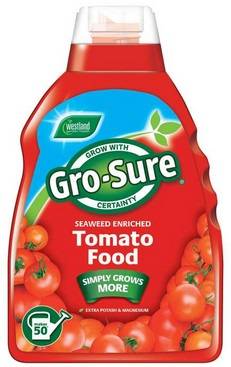
Feed bulbs with tomato feed every 7-10 days from the time shoots appear for best results
Share this page:

